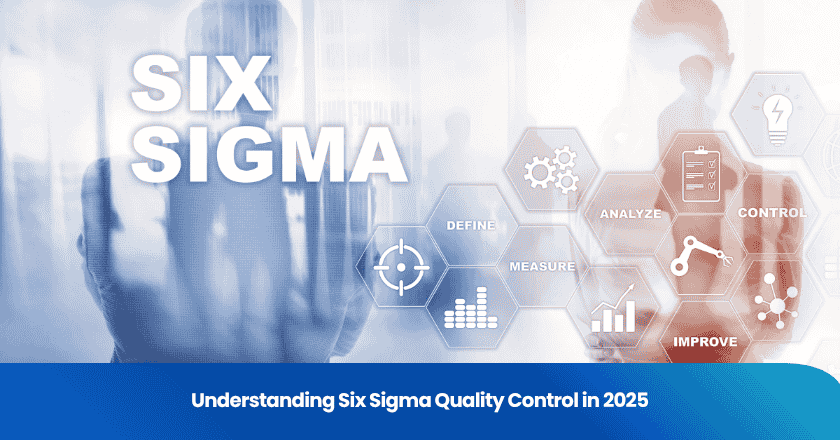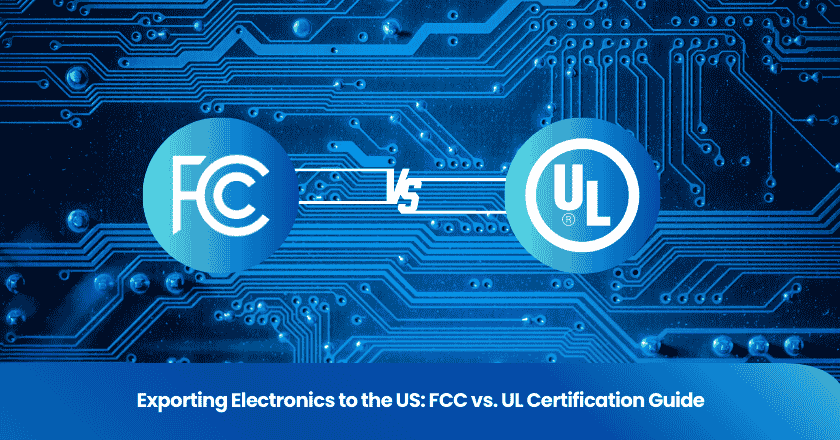
Six sigma quality control gives you a powerful framework to minimize process variation and eliminate defects. You use six sigma to drive continuous improvement, aiming for near-perfect results with only 3.4 defects per million opportunities. You see six sigma shaping cultures across manufacturing, finance, and life sciences, making quality control a cornerstone for success.
Key Takeaways
- The DMAIC methodology provides a structured framework for process improvement. It helps you define problems, measure performance, analyze data, implement solutions, and control results.
- Lean Six Sigma combines waste reduction with defect elimination. This integration enhances efficiency and ensures consistent quality across processes.
- Pursuing Six Sigma certification can boost your career. Certifications like Green Belt and Black Belt signal your expertise in driving process improvements and can lead to higher salaries.
- Technology plays a crucial role in Six Sigma. Real-time data analytics and AI enhance decision-making, allowing for proactive adjustments and improved operational agility.
Six Sigma Quality Control
Core Principles
You rely on six sigma to create a disciplined approach for quality management. This quality management methodology aims to improve processes by identifying and eliminating defects. You focus on achieving minimal variance in quality, striving for a defect-free rate of 99.99966%. The six sigma methodology guides you with three primary targets: "Smaller is Better," "Larger is Better," and "Nominal is Best." These targets help you define clear quality objectives for every process.
You notice that six sigma quality control stands apart from other quality improvement frameworks.
The table below highlights the differences between six sigma and ISO 9001, two leading quality management systems in 2025:
| Aspect | ISO 9001 | Six Sigma |
|---|---|---|
| Focus | Organization-wide quality management system. | Process-specific improvement and defect reduction. |
| Scope | Establishing consistency and compliance across all processes. | Reducing variation in targeted processes. |
| Approach | Framework-driven, emphasizing documentation and standardization. | Methodology-driven, emphasizing data and statistical tools. |
| Certification | Organizational certification for compliance. | Individual certification (Green Belt, Black Belt, etc.). |
| Goal | Achieve consistency, compliance, and customer satisfaction. | Achieve near-perfect quality by reducing variability and defects. |
| Implementation | Requires setting up and maintaining a QMS. | Focuses on solving specific problems through DMAIC. |
You see that six sigma methodology emphasizes data-driven decision-making and statistical analysis. You use lean six sigma to combine waste reduction with defect elimination, making your processes more efficient and reliable. You recognize that six sigma quality control is not just about compliance; it is about achieving measurable results and driving process improvement.
Tip: When you apply lean six sigma, you target both speed and accuracy, ensuring your processes deliver consistent results with minimal waste.
Goals and Purpose
You set clear goals when you implement six sigma quality control. The main aim of six sigma is to enhance process capability and reduce defects. You focus on minimizing variation in every process, which leads to higher customer satisfaction. You achieve this by understanding customer needs and using data-driven decision-making to guide improvements.
- You strive for a defect-free process, aiming for only 3.4 defects per million opportunities.
- You use six sigma methodology to provide structured guidelines for business process improvements.
- You reach desired sigma levels without large investments or extensive restructuring.
- You promote continuous improvement by analyzing data and refining processes.
You see measurable outcomes when you achieve six sigma quality control goals. The table below shows how your objectives translate into real results:
| Objective | Measurable Outcome |
|---|---|
| Reduce product defect rate by 15% | Improved quality and customer satisfaction |
| Achieve ISO 9001:2015 certification | Enhanced operational efficiency and credibility |
| Implement a data-driven approach to processes | Increased operational efficiency and reduced waste |
You use lean six sigma to drive ongoing improvements, ensuring your organization stays competitive. You rely on six sigma methodology to deliver consistent quality, reduce costs, and build trust with customers. You recognize that six sigma quality control is essential for modern quality management and process improvement.
Six Sigma Methodologies
DMAIC
You use the DMAIC methodology as a cornerstone of six sigma quality control. This structured approach helps you tackle process improvement projects with precision and clarity. DMAIC stands for Define, Measure, Analyze, Improve, and Control. Each step guides you through a systematic process to identify problems, implement solutions, and sustain results.
| Step | Description |
|---|---|
| Define | Clearly identify the problem and set the project’s objectives. |
| Measure | Gather data to understand current performance. |
| Analyze | Investigate data to identify the root cause of the problem. |
| Improve | Develop and implement solutions to resolve the issue. |
| Control | Sustain improvements and ensure long-term results. |
You start by defining the problem and setting clear objectives. You measure current performance using reliable data. You analyze the data to pinpoint the root causes of defects or inefficiencies. You improve the process by developing targeted solutions. You control the new process to maintain gains and prevent regression.
You see the DMAIC methodology applied across industries. In healthcare, you reduce readmission rates by analyzing patient data and refining discharge procedures. In manufacturing, you lower defect rates by identifying root causes and implementing corrective actions. In customer service, you decrease wait times by optimizing staffing and call routing. In finance, you streamline loan processing by automating application procedures. In supply chain management, you reduce inventory levels by enhancing demand forecasting.
Tip: When you use lean six sigma with DMAIC, you combine waste reduction and defect elimination for maximum efficiency.
You rely on DMAIC to make data-driven decisions. This approach gives you a clear structure for problem-solving and ensures sustained improvement. You achieve cost savings by optimizing processes and reducing waste. You enhance customer satisfaction by delivering better products and services. The DMAIC methodology helps you achieve measurable results in quality, efficiency, and operational costs.
DMADV
You turn to the DMADV framework when you need to design new products or processes that meet specific customer requirements. DMADV stands for Define, Measure, Analyze, Design, and Verify. This six sigma methodology focuses on creating solutions that align with customer expectations from the start.
| Stage | Description |
|---|---|
| Define | Focuses on understanding customer needs, project goals, and the scope of the project. |
| Measure | Identifies critical-to-quality characteristics and sets measurable criteria for design specifications. |
| Analyze | Evaluates potential design options and aligns them with customer requirements. |
| Design | Develops the selected design in detail, including testing and prototyping. |
| Verify | Validates that the new design meets quality standards and customer expectations in real-world use. |
You begin by defining the project scope and understanding what customers expect. You measure critical-to-quality factors and set clear criteria for success. You analyze different design options to ensure they meet customer needs. You design the solution in detail, testing and refining it as needed. You verify the final product or process to confirm it meets quality standards and performs well in real-world scenarios.
You see DMADV used in industries where innovation and customer alignment are essential. For example, the University of Miami designed a new dormitory using DMADV to ensure the facility met student expectations and institutional goals. You apply lean six sigma principles to DMADV projects to eliminate unnecessary steps and focus on value creation.
You use DMADV when existing processes cannot meet new requirements or when you need to launch a new product. This six sigma methodology ensures that your designs are robust, efficient, and customer-focused. You achieve higher quality and satisfaction by following each stage carefully.
Note: DMADV is ideal for situations where you need to build something new rather than improve an existing process.
You rely on six sigma and lean six sigma to guide both improvement and innovation. You choose DMAIC for process optimization and DMADV for new design projects. Both methodologies help you achieve operational excellence and deliver superior results in 2025.
Roles and Certifications
Key Roles
You play a vital part in six sigma quality control projects by taking on specific roles that drive success. Each role carries distinct responsibilities, ensuring that business process improvements are both effective and sustainable. The table below outlines the essential roles you encounter in a six sigma team:
| Role | Responsibilities |
|---|---|
| Coach | Sets a schedule, defines project results, mediates conflicts, and identifies success. |
| Team Leader | Oversees team work, communicates with the sponsor, and keeps the project on schedule. |
| Team Member | Executes specific assignments and works with the team to meet project goals. |
| Process Owner | Monitors performance post-implementation and addresses any issues with project metrics. |
Tip: When you work within a lean six sigma team, you collaborate across these roles to maximize efficiency and maintain quality standards.
Certification Paths
You advance your career and expertise by pursuing six sigma certification. In 2025, you find several recognized certification levels that match your experience and ambitions. The table below summarizes the main certification paths:
| Certification Level | Description |
|---|---|
| Yellow Belt | Entry-level certification introducing basic Lean Six Sigma concepts. |
| Green Belt | Focuses on leading smaller-scale improvement projects and assisting Black Belts. |
| Black Belt | In-depth knowledge of data analysis and project management, leading complex improvement projects. |
| Master Black Belt | Highest level, overseeing Six Sigma initiatives and mentoring other belts. |
You choose from organizations such as IASSC and ILSSI to earn your six sigma certification. These credentials signal your ability to lead lean six sigma projects and deliver measurable results.
Note: Six sigma certification often leads to double-digit salary gains and higher promotion rates. Employers value your skills in driving business process improvements.
Implementation Steps
You implement six sigma quality control in your organization by following a structured approach:
1. Secure management buy-in and allocate a budget for training and project costs.
2. Train personnel in lean six sigma roles, including Green Belts, Black Belts, and Master Black Belts.
3. Select improvement projects based on training and begin the six sigma process.
Callout: You overcome challenges such as resistance to change and resource constraints by educating your team, investing in training, and starting with pilot projects.
Benefits and Outcomes
Process Improvement
You achieve measurable process improvement when you apply six sigma quality control. You use lean six sigma to improve processes, streamline operations, and deliver a defect-free process. You see organizations worldwide adopting six sigma certification to drive process improvements and variation reduction. You focus on data-driven strategies that lead to high customer satisfaction and continuous improvement.
You see that six sigma quality control helps you eliminate defects and achieve a defect-free process. You use lean six sigma to reduce waste and increase efficiency. You notice that process improvement leads to higher customer satisfaction and better operational results.
Defect Reduction
You rely on six sigma to reduce defects and maintain a defect-free process. You use lean six sigma tools to identify root causes and implement targeted solutions. You see hospitals achieve defect rates as low as 0.03% after adopting six sigma quality control. You notice that successful medical facilities maintain average defect rates around 1%, which drives high customer satisfaction.
- You apply structured six sigma methodology to address high defect rates in industries such as rubber processing.
- You use DMAIC phases to pinpoint problems and eliminate defects.
- You see advanced six sigma tools help medical facilities reach near-zero defect levels.
You recognize that variation reduction and defect elimination translate into cost savings and efficiency gains.
Tip: You achieve high customer satisfaction and continuous improvement when you combine lean six sigma with six sigma certification. You deliver process improvements that result in a defect-free process and measurable business outcomes.
Trends in 2025
Technology Integration
You see technology transforming six sigma quality control in 2025. Real-time data analytics and monitoring allow you to collect and analyze process data instantly. This capability gives you immediate feedback, so you can adjust operations without delay. Predictive analytics help you anticipate problems before they occur, supporting proactive decision-making and operational agility. You use lean principles to reduce waste and maintain a continuous flow, which strengthens your six sigma initiatives.
- Real-time data analytics and monitoring
- Predictive analytics for proactive adjustments
- Lean principles for waste reduction
Artificial intelligence and machine learning play a major role in quality control. You implement AI-driven control systems to maintain optimal process conditions, which reduces waste and rework. In manufacturing, you track process shifts in real time and lower defect rates. Hospitals use AI agents to assess patient flow, cutting waiting times by 25%. You combine the DMAIC framework with AI development, establishing defect criteria tailored to AI outputs. Automated guardrails and confidence thresholds ensure reliability, keeping defect rates below six sigma benchmarks.
Tip: You enhance continuous improvement by adapting root cause analysis for machine learning systems, identifying features that contribute to errors.
Industry Applications
You notice that six sigma and lean six sigma have expanded across industries. Automotive, aviation, healthcare, manufacturing, and technology sectors lead in adoption. You see organizations achieve significant savings, improved quality, and operational efficiency through six sigma certification and process improvement.
You observe successful applications in healthcare, manufacturing, and IT. Hospitals streamline processes and reduce turnaround times. Manufacturers improve product quality and minimize waste. IT teams use lean six sigma to optimize workflows and deliver reliable results.
Future Opportunities
You find new opportunities emerging for six sigma quality control. Organizations using digitally-enhanced six sigma report 37% faster project completion times. You see 72% of organizations now describe their improvement programs as lean six sigma. Companies blending six sigma with Agile achieve 22% higher customer satisfaction scores. Sustainability metrics appear in 64% of six sigma projects, reflecting a shift toward responsible business practices. Adoption in small and medium enterprises has grown by 43% since 2020.
- Digitally-enhanced six sigma accelerates project timelines
- Lean six sigma dominates improvement programs
- Agile integration boosts customer satisfaction
- Sustainability metrics drive responsible continuous improvement
- Small and medium enterprises embrace six sigma certification
Experts forecast that lean six sigma will evolve with Industry 4.0 technologies. AI and automation amplify efficiency and quality, making methodologies more agile and responsive. You use enhanced simulations and digital twins to improve testing and feedback. AI-powered predictive analytics transform maintenance and efficiency, while hybrid approaches like Agile integration become more common.
Note: You stay ahead by leveraging AI and automation to analyze large datasets, uncover inefficiencies, and improve root cause analysis. This approach ensures continuous improvement and positions you for future success.
You see Six Sigma quality control driving measurable results in 2025. Companies report billions in savings, faster invoice processing, and dramatic error reductions.
- General Electric saved over $12 billion in five years.
- Honeywell cut invoice time by 50% and eliminated costly rework.
- Virginia Mason Medical Center reduced medication errors by 75%.
To advance your expertise, follow these steps:
1. Set baseline metrics and SMART goals.
2. Create real-time dashboards.
3. Use AI for process improvement.
4. Embed lean Six Sigma in daily routines.
Stay current by joining training programs, renewing certifications, and exploring new technologies like AI and automation.
FAQ
What is the difference between Six Sigma and Lean Six Sigma?
You use Six Sigma to reduce defects and variation. Lean Six Sigma combines these goals with waste elimination.
Tip: Lean Six Sigma helps you streamline processes and improve speed while maintaining high quality.
How long does it take to earn a Six Sigma certification?
You typically complete a Green Belt certification in two to three months. Black Belt programs may require four to six months.
Training duration depends on your schedule and chosen certification level.
Can you apply Six Sigma in non-manufacturing industries?
You use Six Sigma in healthcare, finance, IT, and service sectors.
Note: You improve customer satisfaction, reduce errors, and optimize workflows in any industry.
What tools do you use in Six Sigma projects?
You rely on tools like Pareto charts, fishbone diagrams, control charts, and process mapping.
Grow your business with TradeAider Service
Click the button below to directly enter the TradeAider Service System. The simple steps from booking and payment to receiving reports are easy to operate.



